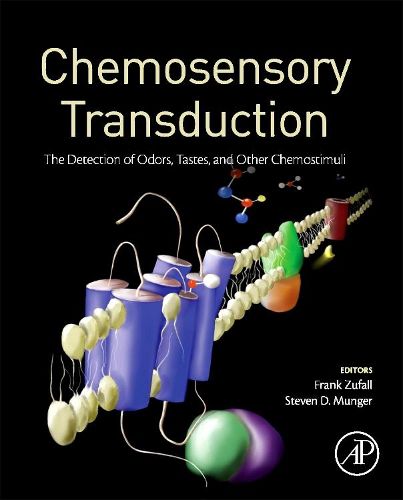Readings Newsletter
Become a Readings Member to make your shopping experience even easier.
Sign in or sign up for free!
You’re not far away from qualifying for FREE standard shipping within Australia
You’ve qualified for FREE standard shipping within Australia
The cart is loading…






Written by leaders in the field of chemosensation, Chemosensory Transduction provides a comprehensive resource for understanding the molecular mechanisms that allow animals to detect their chemical world. The text focuses on mammals, but also includes several chapters on chemosensory transduction mechanisms in lower vertebrates and insects. This book examines transduction mechanisms in the olfactory, taste, and somatosensory (chemesthetic) systems as well as in a variety of internal sensors that are responsible for homeostatic regulation of the body. Chapters cover such topics as social odors in mammals, vertebrate and invertebrate olfactory receptors, peptide signaling in taste and gut nutrient sensing. Includes a foreword by preeminent olfactory scientist Stuart Firestein, Chair of Columbia University’s Department of Biological Sciences in New York, NY.
Chemosensory Transduction describes state-of-the-art approaches and key findings related to the study of the chemical senses. Thus, it serves as the go-to reference for this subject for practicing scientists and students with backgrounds in sensory biology and/or neurobiology. The volume will also be valuable for industry researchers engaged in the design or testing of flavors, fragrances, foods and/or pharmaceuticals.
$9.00 standard shipping within Australia
FREE standard shipping within Australia for orders over $100.00
Express & International shipping calculated at checkout
Written by leaders in the field of chemosensation, Chemosensory Transduction provides a comprehensive resource for understanding the molecular mechanisms that allow animals to detect their chemical world. The text focuses on mammals, but also includes several chapters on chemosensory transduction mechanisms in lower vertebrates and insects. This book examines transduction mechanisms in the olfactory, taste, and somatosensory (chemesthetic) systems as well as in a variety of internal sensors that are responsible for homeostatic regulation of the body. Chapters cover such topics as social odors in mammals, vertebrate and invertebrate olfactory receptors, peptide signaling in taste and gut nutrient sensing. Includes a foreword by preeminent olfactory scientist Stuart Firestein, Chair of Columbia University’s Department of Biological Sciences in New York, NY.
Chemosensory Transduction describes state-of-the-art approaches and key findings related to the study of the chemical senses. Thus, it serves as the go-to reference for this subject for practicing scientists and students with backgrounds in sensory biology and/or neurobiology. The volume will also be valuable for industry researchers engaged in the design or testing of flavors, fragrances, foods and/or pharmaceuticals.